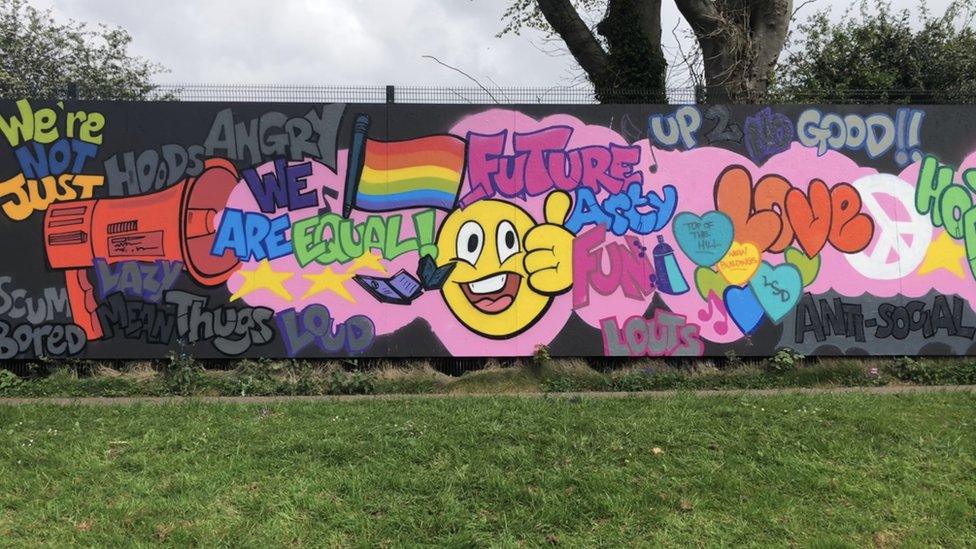Coronavirus: The new 'heroes' on Northern Ireland's walls
- Published
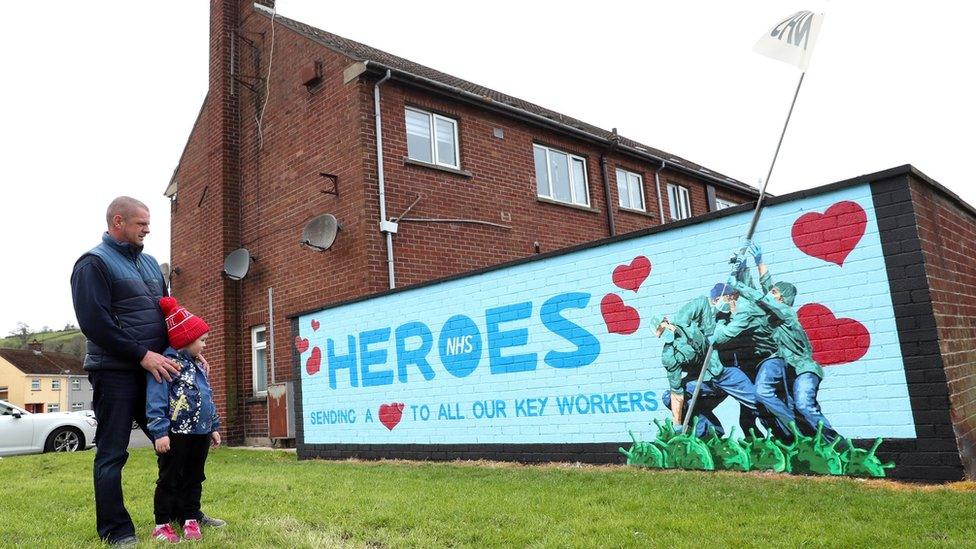
The County Antrim village of Glynn proudly showing off its new mural
Throughout Northern Ireland's troubled past, street art has long been a means of political and cultural expression.
Republicans and loyalists painted murals on buildings and gable walls, as a way of marking out territory and memorialising those lost throughout the 30-year conflict.
Many of those murals remain today, a constant reminder of a darker past.
Now, amid the coronavirus pandemic, a new wave of artwork is emerging and it is one that appears to have universal appreciation.
In areas across Northern Ireland, street artists have turned their skills to paying homage to the frontline workers battling against Covid-19.
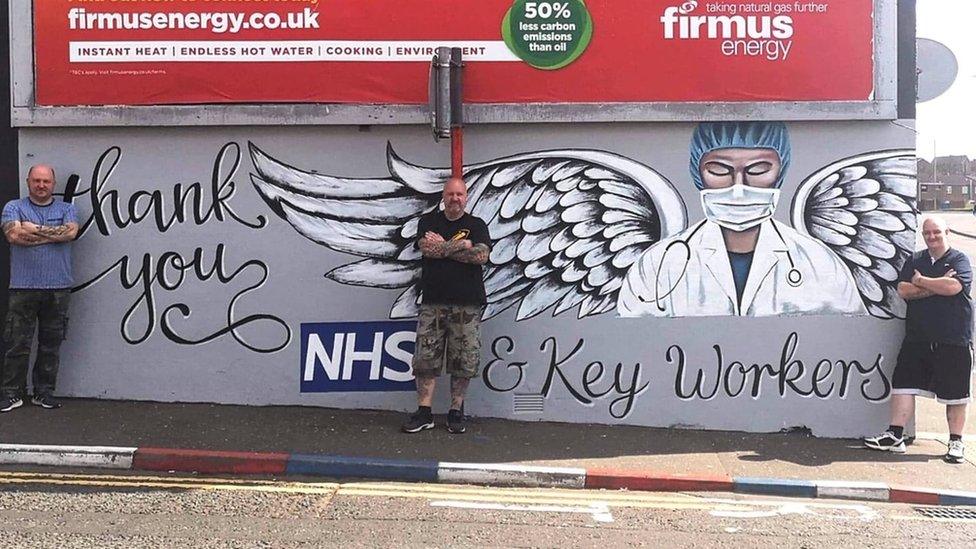
Peter, Dee and Mark Logan have been painting the heroes of the hour
A mural featuring Captain Tom Moore, thanking the NHS, has appeared in the Clonduff Estate in east Belfast.
The 99-year-old war veteran, who turns 100 on Thursday, captured the world's attention after he began raising money for the NHS by completing 100 laps of his garden before his milestone birthday.
His initial £1,000 fundraising target was broken in about 24 hours and he has now raised more than £29m for the NHS.
The pensioner from Marston Moretaine in Bedfordshire, has not stopped there and extended his challenge to 200 laps after he completed the first 100 laps, 14 days ahead of schedule.
Meanwhile, three brothers in the Waterside area of Londonderry have been hard at work transforming their area to honour healthcare staff.
Mark, Peter and Dee Logan have painted NHS murals in Bond Street, Nelson Drive and Irish Street in the city.
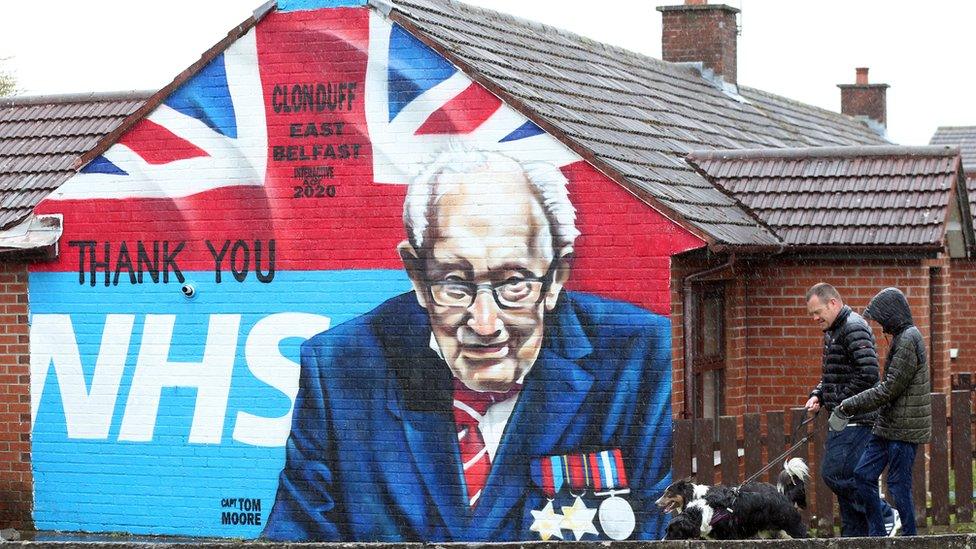
A mural of Captain Tom Moore has appeared on a gable wall in east Belfast
Mark Logan, who has been involved in mural painting in the Waterside for more than 20 years, says this work is among the most important he has ever helped produce.
"It's all about recognising the work of the NHS," he said.
"It doesn't matter what side of the community you're from, everyone is behind you."
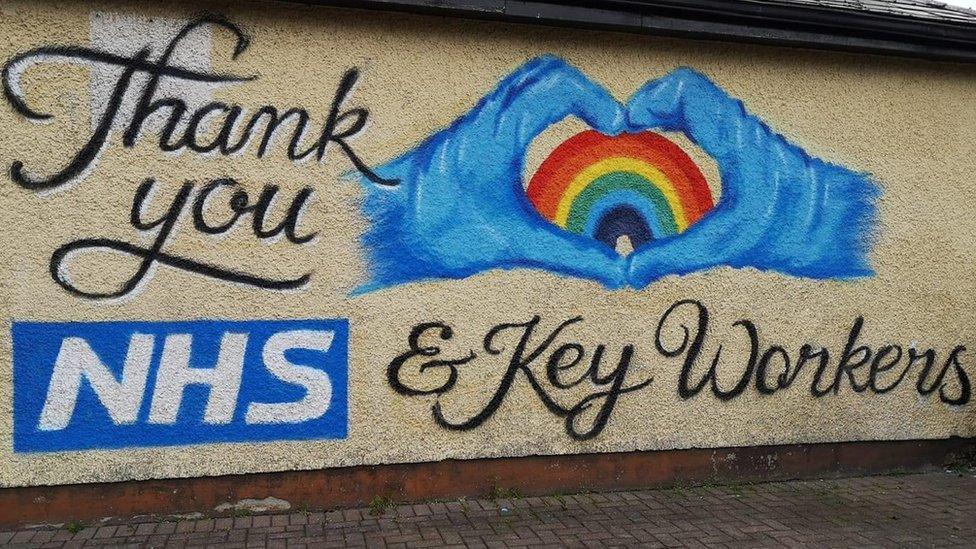
The Logans' Irish Street work
The brothers hope their work will be seen by health workers, helping to spur them on and "get them through the day".
"Doctors and nurses are understandably exhausted, and I truly believe some words of encouragement every now and again can go a long way," he said.
"They say a picture paints a thousand words and we just hope the murals will give them that extra psychological boost to keep going."
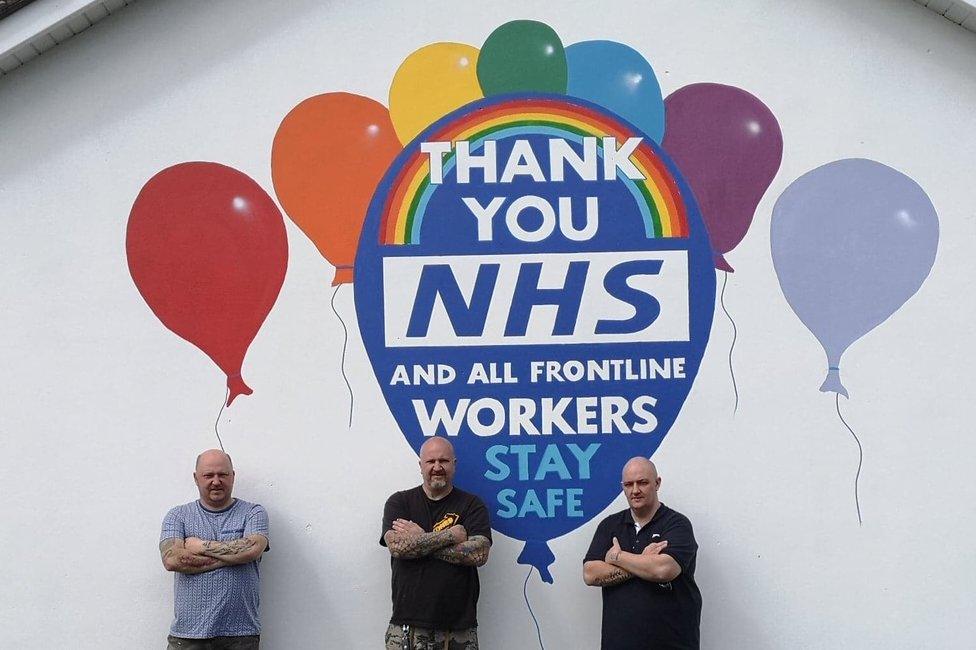
Say it with balloons on Nelson Drive in Londonderry

The Good Friday Agreement in 1998 marked a seismic shift away from violence in Northern Ireland.
That change was also reflected on the walls, with traditionally sectarian murals slowly making way for work that was more reflective of a new mood.

The original Derry Girls
Professor Peter Shirlow, head of Irish Studies at Liverpool University, said the appearance of the NHS murals marked an "important cultural moment" within Northern Ireland's society.
"Despite territorial or constitutional differences among people, it is very, very obvious that the NHS is a critically important institution for these communities," he said.
Prof Shirlow questioned whether "murals of the past" traditionally depicting "hooded gunmen" that claimed to represent their communities actually did so and believes NHS murals are a more accurate representation of communities now and "everybody within them".
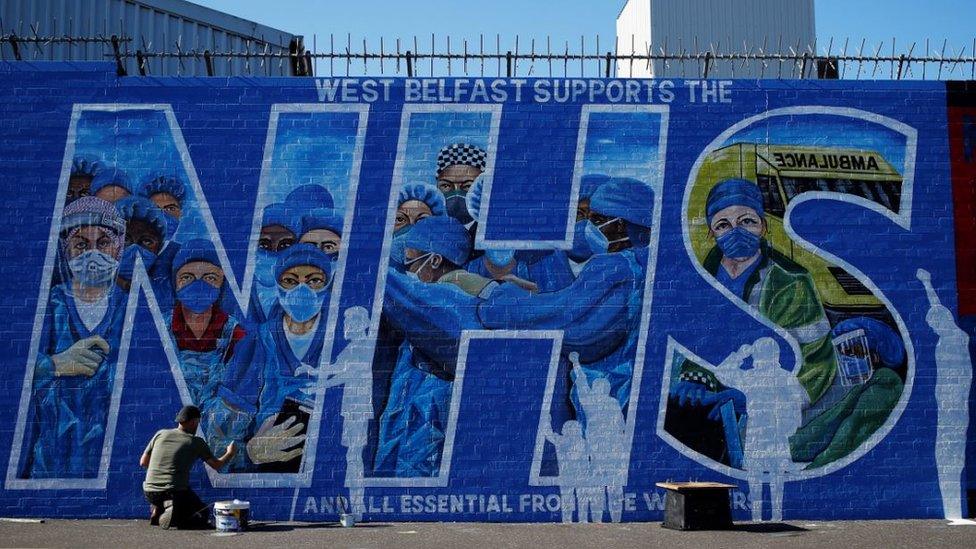
Artist Marty Lyon working on his tribute mural in west Belfast
He explained they were reflective of what was slowly occurring in Northern Ireland, with people "starting to engage more with issue-based politics".
Prof Shirlow believes NHS murals showcase the fact that despite some issues still dividing communities here, there are many more, such as healthcare, that are universally shared.
Efforts from the Northern Ireland Arts Council and community groups over the years have seen hundreds of what were deemed "violent murals" re-imaged.
Depictions of paramilitary gunmen were slowly becoming a thing of the past and murals depicting poets, authors and sports stars came to the fore.
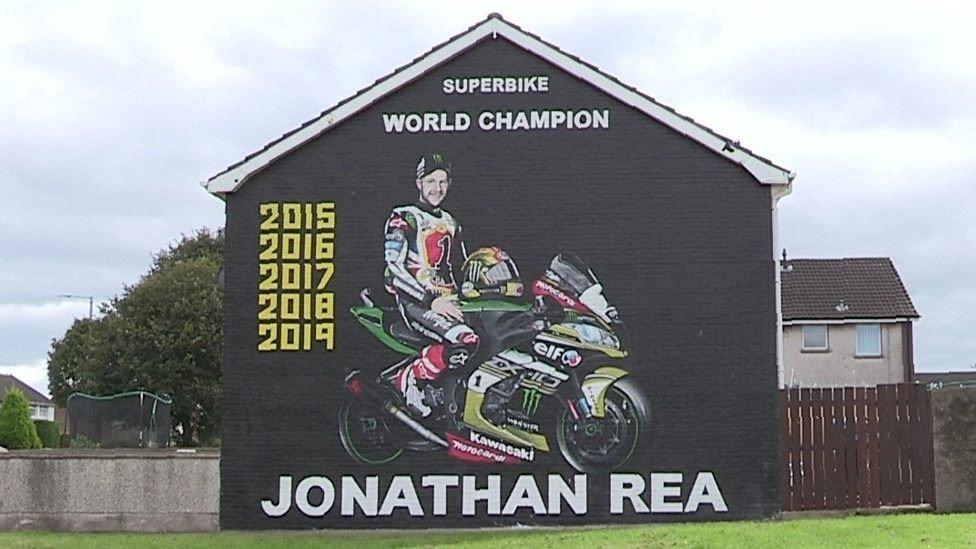
A different NI hero immortalised on a gable wall in Newtownards
Suzanne Lyle, head of visual arts at NI Arts Council, said she has seen a move away from political murals to more "community-themed ones" over the years.
Dr Lyle has been involved in programmes which helped communities to "re-imagine their areas" through new artwork and sculptures.

Mount Vernon in north Belfast displays its latest mural
Dr Lyle said many people in both nationalist and unionist communities had wanted to change the tone and setting of their areas.
"If you come out of your house with your child, you might not be comfortable with a grim reaper standing on a gable wall beside you," Dr Lyle said.
"These NHS murals are an expression of support from the whole community and they are great to see."
- Published16 June 2019
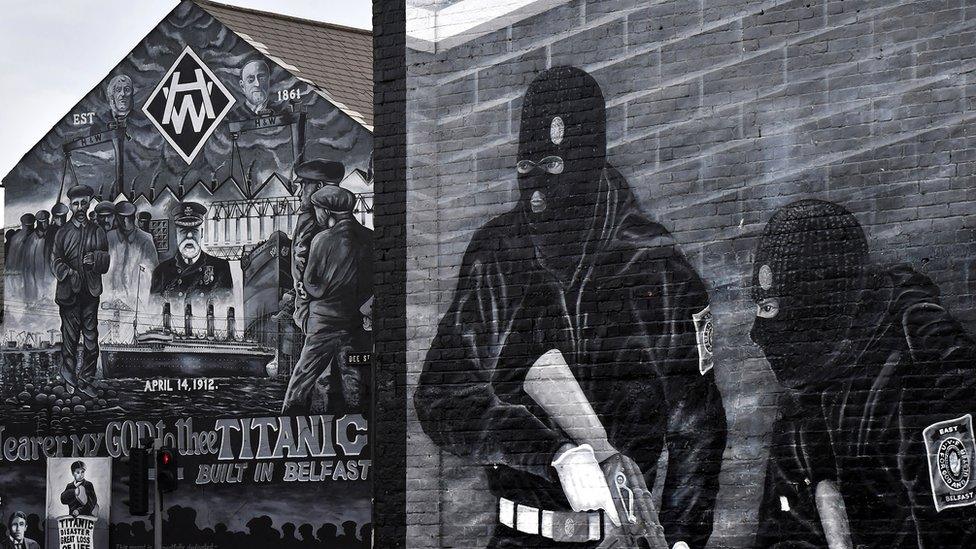
- Published18 May 2019
